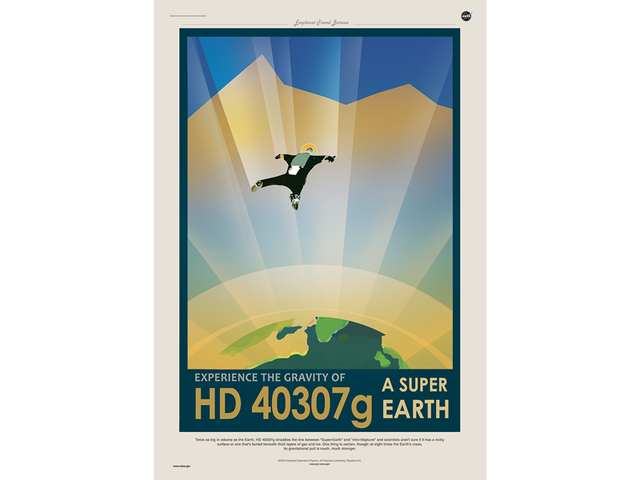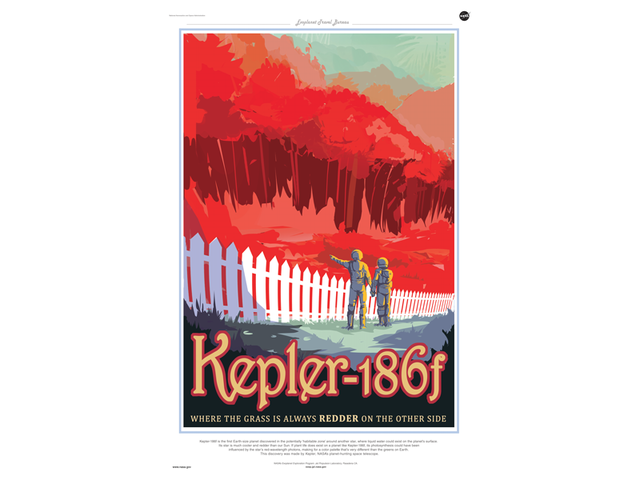Futuristic Nasa posters promote vacations in alien worlds as Kepler discovers 1000th exoplanet

Nasa has released a series of posters advertising vacations in the outer world.
The posters celebrate Kepler's recent milestone discovery of the 1000th exoplanet, planets which orbit Sun-like stars. The planet hunting telescope has verified planets that are in the habitable zones of their stars.
The posters advertise vacations at some of these exoplanets discovered by Kepler.
Kepler-16b – land of two suns
In one of the posters, the space agency compares exoplanet Kepler-16b with planet Tatooine in the film Star Wars as like Tatooine, Kepler-16b orbits a pair of stars.
Nasa's poster depicts Kepler-16b as a terrestrial planet but says it could also be a gas giant like Saturn.
The artwork reads: "Relax on Kepler-16b - Where your shadow always has company."
'Super Earth' HD 40307g
Another poster shows an astronaut free-falling to planet HD 40307g, which is twice as big in volume as Earth and has a much stronger gravitational pull.
The description reads: "HD 40307g straddles the line between 'Super-Earth' and 'mini-Neptune' and scientists aren't sure if it has a rocky surface or one that's buried beneath thick layers of gas and ice. One thing is certain though: at eight time the Earth's mass, its gravitational pull is much, much stronger."

Red landscapes
The third poster shows two astronauts in the backdrop of a red landscape. This advertisement is for exoplanet Kepler-186f, which is the "first Earth-size planet discovered in the potentially 'habitable zone' around another star, where liquid water could exist on the planet's surface."
The title reads: "Where the grass is always redder on the other side." The star of Kepler-186f is much cooler and redder than our Sun.
The poster also describes why plant life, if there are any, on the planet would appear red rather than green as that on Earth.
"If plant life does exist on a planet like Kepler-186f, its photosynthesis could have been influenced by the star's red-wavelength photons, making for a color palette that's very different than the greens on Earth."

© Copyright IBTimes 2025. All rights reserved.





















